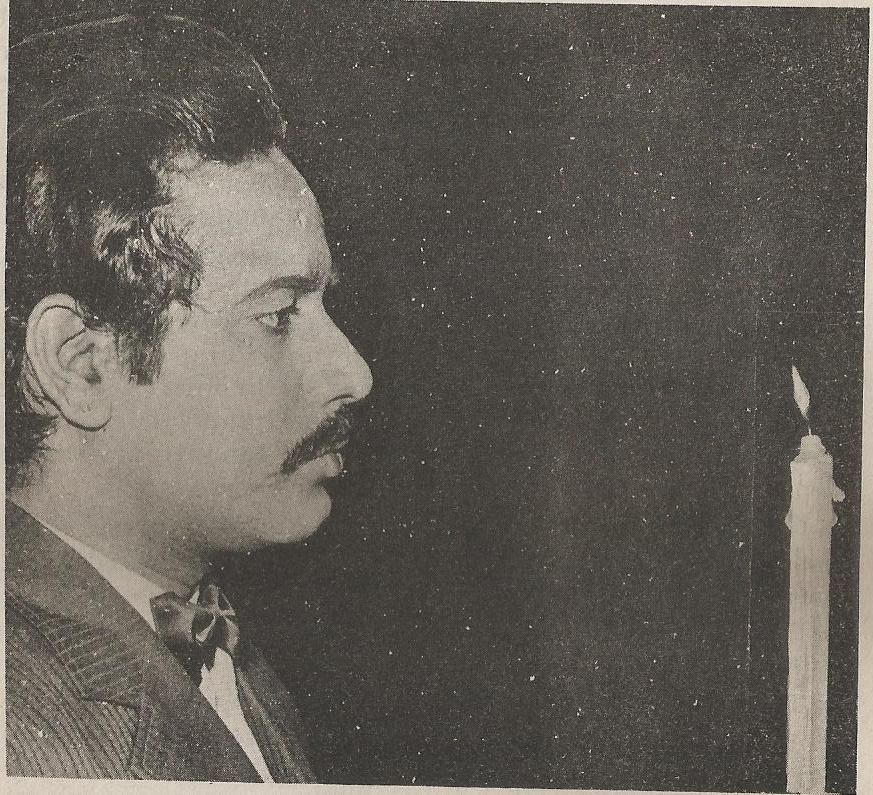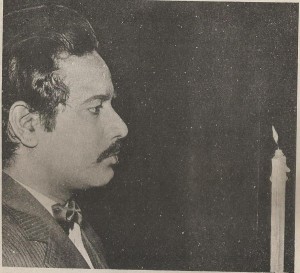
We have discussed about benefits of tratak meditation and now we will go a step further to discuss the various classifications of the types of tratak discussed there.
Classifications Of Near Tratak:
Idol Tratak
Take an idol roughly 3 to 4 inches high and put it at some distance. Fix your eye on the idol and start developing concentration. If you do not have an idol, take a picture instead. Make sure that the picture is not coloured.
With the idol or picture before, you start fixing your gaze on the eye of the idol or picture as the case may be. You must concentrate your gaze at the pointed object without least deviation or disturbance. It must be a one-point gaze. You should not deflect your eye unless you feel your own eye watering.
At this stage you better take rest for some time. After taking sufficient rest you should close your eyes and bring forth the idol or picture in your vivid imagination and then put it to tratak practice. At least 20 or 25 times you should bring forth the idol or picture in your imagination.
After a regular practice spread over a few days the practitioner will be able to bring forth in his imagination the idol or picture without slightest delay. Initially the idol will remain in his concrete imagination no more than a minute or so. Gradually the practitioner will find the idol staying in his imagination for a longer duration.
In the beginning your mind’s eye or visual imagination will see many things in addition to the idol or picture. Gradually it will settle down to a one-point concentration on the specific target. Again, this concentration will give the practitioner the power to see any event or thing or person, should he desire to see.
In order to see these desired object the practitioner should bring tratak to bear on such objects, in addition to the idol or picture. He should try to visualise them as long as possible.
This practice paves the way for the opening of the third eye. As one closes one’s eyes and brings tratak to bear on the idol placed before, the process of the opening of the third eye begins to assume shape. By this practice the ganglion supporting the third eye gets strengthened.
In Table they dig a whole into the head and open the third eye. However, the tratak technique has been found to be more effective.
Light Tratak:
You could being to practise light tratak only when you are quite sure that you have successfully concentrated upon the picture for at least 32 minutes.
Light a bigger-size candle and place it in a room secure against strong minds the idea is that nothing in the room should put the candle-flame off. Now darken the room. Sit on a asana at least 3 feet away from the candle. Fix your gaze on the candle-flame. Ensure that no other thoughts or feelings cross your mind.
As you go ahead with your regular practice you will find that the light emanating from the candle is getting more brilliant and dazzling. If you yet continue the practice you will see the faces of many people in the glow. At times you will see the faces of the persons of your choice as soon as you remember them.
For real, good results you should practise Light Tratak for at least 20 to 25 minutes daily.
In real terms the candle flame is a miniature of fire. For this reason, if you continue to practise this technique, your eye will develop a glow of fire and also such dazzling resplendence that none will dare look at you. If at all he looks at you, he will find himself rather weak and dispirited.
The Hindu scriptures are replete with real life stories in which the indignant sadhu merely looked at the bird seated high above on the branches of the tree and brought it down dead. In a way it was the fire which emanated from his eyes, which eventually burnt the bird.
The practitioner should exercise his power for better ends, and never for ulterior motives.
Nose-tip Tratak:
You must ensure that you have had a regular practice of Light Tratak before you set out to practise Nose-tip Tratak.
Begin this exercise by fixing your eye on the tip of your nose. After you have been able to achieve this fixation, you take your eye to settle down at the centre between the brows.
It is a pretty arduous exercise. It gives rise to recurrent headaches. The eye lids grow painfully restless. So the practitioner should continue to go ahead with this practice and keep on prolonging the duration of the practice. It may be achieved in a day or a month. At times it may take a whole year.
The practice involving concentration on the mid-centre between the two eye brows is also called Trikuti, practice. When the practitioner succeeds in sustaining this kind of practice for 32 minutes, he is credited with Divine sight. He can very well peep into the past and see beyond into the dim future. He can also fathom the thoughts and feelings of others. He can see before himself the events happening at distant and obscure places. He can also easily concentrate and meditate upon the image or concept of God.
Red Cloth Tratak:
Take a square piece of blood-red silken cloth six inches long and six inches wide and stitch it at the centre of a piece of while cloth.fix it on the wall. Make a point in white colour at the centre of the blood-red cloth. Now fix your eye on the white point.
While practising keep your mind totally subdued and perfectly controlled. As you continue to gaze at the white point you will see the blood-red cloth turning into blue. The white point begins to shine. As you achieve a total concentration, the white point will be invested with a dazzling brilliance. Sometimes it may also vanish from sight.
One can have a similar practice by placing on the red cloth a coarse grain.
When over a long and regular practice the red turns into blue, it should be taken as a pointer to your perfect success. For the blue reflects the inner light of the practitioner.
The practice links the inner mind with the outer mind. As a result many divine ideas come up before the mind’s eye. With closed eyes you can see distinguished sadhu and Yogis, as also the scenes of rivers and mountains. It helps enrich the power of memory, too. It eliminates tension. Time loses its dimension. For instance an hour spent in the practice does not seem longer than a mere ten minutes. In order to avoid the pain of the over-strained eyes, one neither should nor practise this tratak more than 10 times a day.
Point Tratak:
Point Tratak needs a regular practice. At the end of the exercise you better wash your eyes with cold water. It will remove the fatigue. The practice should not be resorted to in sizzling light. Early dawn makes a very suitable time for the practice. If at all one has to practise it in the day time, one better does so in a closed room.
Put a black dot on a larger art paper. Affix it on the wall opposite. Squat at a location two or three feet away from the wall. Now you fix your eye on the black dot.
After some time the practitioner will not see the black dot. Instead a dazzling light will seem to have replaced the black dot when you see a thing like this, take it that your effort have been crowned with success.
Now introduce a change in the practice. Draw a circle around the black dot in black colour. Now, once again, fix your eye on the black dot. Gradually the practitioner will see that the black dot as also the black circle has vanished. It has been replaced with brilliant lines sprouting about. Again it is an indication to your success as a practitioner.
Introduce another change. Draw seven similar lines around the black dot. Ensure that the black dot remains at the centre of the lines.
Now fix your eye on the black dot. Gradually the practitioner will begin to feel that the black dot as also one or two circumferences does not seem to be present at the same location. As he goes ahead with the practice he will find that all seven circles have disappeared.
It means you have already entered your Turiyawastha. It is a delightful state, because the seven lines disappeared only when your own inner light blazed forth. The inner splendour gets reflected on the paper with such extraordinary power that the black dot does not appear to exist. The blank circumferences around the black dot also do not seem to exits. The brilliant and golden light which you find in its place is nothing but your own inner light which having been reflected on the paper gets into your eyes. It is reckoned as an outstanding achievement.
Now you have to advance to the next higher stage of this practice. Take a piece of white art paper. Draw at its centre an inch-diameter black dot. Gradually the practitioner will find the big dot thinning down. A time may come when the enormous dot may disappear altogether. Indeed for some time the big dot will remain unseen.
But gradually it will re-emerge from the small dot it was to its original enormous size. Decrease and increase in the shape is an indication of the success practice. The decrease indicates that your outer mind is getting dormant and the inner mind activated. Similarly when the dot begins to assume its original shape, it implies that your outer mind is, again, getting activated and is being restored to its original state.
As already explained, when the inner mind gets activated and the outer mind goes dormant, the implication is that the practitioner has reached his inherent state. Now, in this state, he can see distant objects as easily as he sees the objects close by.
